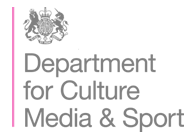Nuisance Calls: Reducing the Threshold for Enforcement: Conclusion
Author: Department of Culture, Media & Sport
Date: 25th February 2015
 Proposal to lower the legal threshold for the Privacy and Electronic Communications (EC Directive) Regulations 2003 (“PECR”) for regulations 19-24, to tackle unsolicited direct marketing calls and SMS text messages
Proposal to lower the legal threshold for the Privacy and Electronic Communications (EC Directive) Regulations 2003 (“PECR”) for regulations 19-24, to tackle unsolicited direct marketing calls and SMS text messages
1.1 This Report summarises responses to the Department for Culture Media and Sport consultation on proposed amendments to the Privacy and Electronic Communications (EC Directive) Regulations 2003 (“PECR”) to lower the legal threshold for enforcement of regulations 19 to 24 with the aim of tackling non-compliant unsolicited direct marketing by electronic means.
1.2 The PECR requires that calls cannot be made to a number that is registered with the Telephone Preference Service (TPS), or if previously the caller has been advised not to make further calls. Recorded message calls require prior consent, as do messages sent by electronic mail (such as SMS text messages) in some circumstances. The Information Commissioner’s Office (ICO) regulates, among other things, unsolicited marketing calls, automated recorded messages and SMS text messages under the PECR. The consultation proposal was to lower the legal threshold at which the ICO may issue a civil monetary penalty (CMP) for contravention of regulations 19 to 24 by amending or removing the requirement that the contravention caused ‘substantial damage or substantial distress’. A CMP of up to £500,000 can be issued by the ICO for breaching the PECR.
1.3 The ICO plays a key and leading role in taking enforcement action against organisations that breach the regulations. Since January 2012, it has issued nine CMPs totalling £815,000 to organisations found to be making unsolicited direct marketing calls and sending unsolicited SMS text messages. In October 2013, the First-tier (Information Rights) Tribunal overturned one of the largest CMPs the ICO had issued. This was because the Tribunal determined that ‘substantial damage or substantial distress’ had not been caused by the company concerned. That decision was subsequently upheld by the Upper Tribunal. Consequently, the ICO has been very reluctant to issue further penalties in relation to unsolicited marketing calls and text messages in particular for a well-founded fear that they would not be seen as meeting the legal threshold for action. As a result, the ICO currently only investigates a very small proportion of cases and targets its resources upon those that could potentially result in larger CMPs, as they would act as a stronger deterrent. The ICO have confirmed, from their investigations, that should the threshold be lowered, enforcement would be possible against an increased number of organisations.
1.4 In July 2013, the ICO presented a business case to the Department for Culture, Media and Sport requesting that the legal threshold be lowered. The Government agreed with this view and in the Nuisance Calls Action Plan, issued in March 2014, the Government committed to bringing forward this consultation with a view to enabling the ICO to issue CMPs more easily and therefore, take more effective enforcement action against organisations that deliberately or negligently breach the requirements of the PECR. The issue of nuisance calls continues to be a concern for many consumers and is in the media spotlight. Therefore, in addition to this measure, the Government will continue with its efforts to explore further additional potential solutions where possible to help address the problem of nuisance calls.
1.5 The consultation was launched on 25 October, and closed on 6 December 2014. Respondents were asked to submit views on three questions, which included providing an opinion on the three options for action proposed, and were invited to do so via e-mail or written response. A total of 298 responses were received. A summary of returns is set out below, along with our analysis of the returns. In section 3, we explain the next steps that we plan to take and how this has been informed by the responses submitted